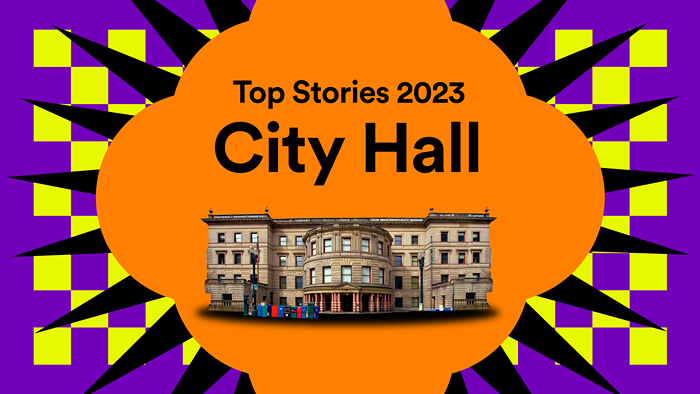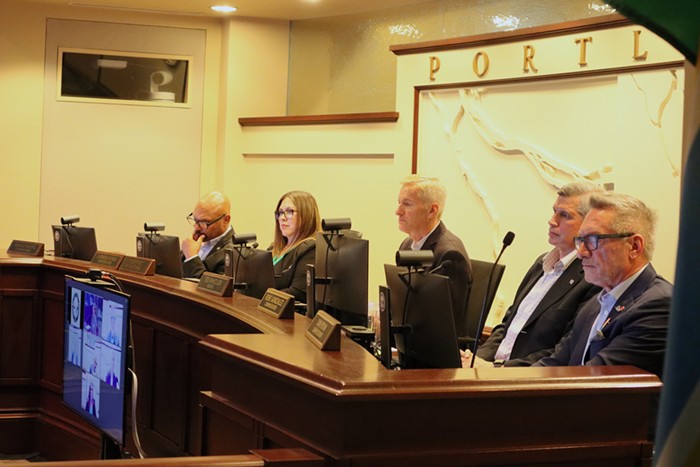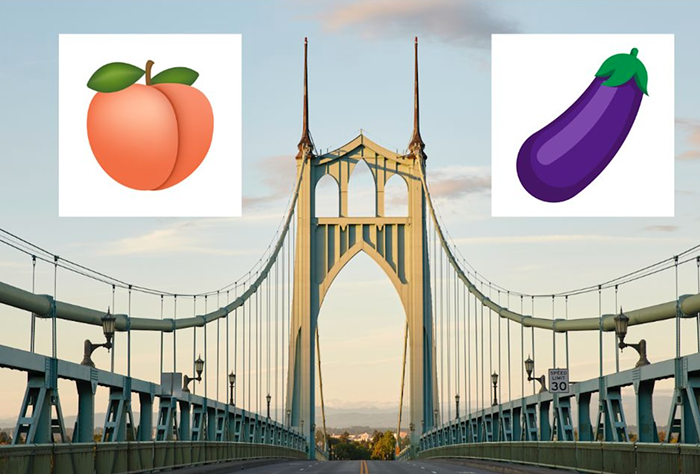
- Know Your City
Today, I spent my lunch hour at Columbia River Correctional Institution, the minimum-security men's prison in Northeast Portland, where artist Emily Squires, art historian Reiko Hillyer, and Correctional Rehabilitation Manager Elizabeth LaCarney facilitated a dedication ceremony and one-time unveiling of 30 Flags, the result of a 12-week art project made by five 12 inmates at the facility in collaboration with Squires. Cohosted by Know Your City (who I must say, seem to be killing it lately with social justice-inspired art projects), the afternoon marked a chance to see the flags in one of the only places they'll be installed—the prison itself.
Initially envisioned as a static wall project, 30 Flags actually consists of 2000 silkscreened flags designed by the men who took the workshop led by Squires and Hillyer; at CRCI, the flags are strung in the courtyard outside the prison, along the main corridor, and a few've been set aside in packages on Squires' desk, she said. These are the ones the men are each sending to a selected person in their lives outside of prison. Two of the men said they were sending this set of flags to their mothers.
It was Canteen Day at CRCI today, which meant that while we filed down the long hallway that comprises most of the prison, inmates lined up outside the commissary window to pick up orders they'd placed—grocery-sized bags of Ramen packets, peanut butter, and at least one pair of bright-white tennis shoes, among other things. The artists' colorful flags ran all the way down the hallway past the canteen and the classroom where the men designed them—30 flags fit perfectly between existing wall vents, incidentally—their colors providing the only variation from the space's otherwise bland, cinderblock palette.
Cell phones aren't allowed inside, so I didn't get any pictures of the flags as they were installed, but I did get a flag on the way out. The idea, said Squires, was for the flags to exist outside of the prison where they were made. Each person in attendance at the unveiling was invited to leave CRCI with a flag. Here's the one I took back with me (after the jump):

- MB
You can also see Squires' documentation of the project here.
In one of these dispatches, Squires writes, "I also have no illusions that collaborating on an art installation with men at CRCI is going to somehow fundamentally change the vast expanse of the prison industrial complex in this country. However, it is an opportunity to talk with this particular group of men about their experience of displacement from their families and communities and current lived reality of a totally different place. With and through this art project, we are going to to try and create meaning from this fragmentation."
Seeing the men who took part in her project speak about their experiences making art, it was clear that she'd met this benchmark. One inmate called it one of the healthiest experiences of his time behind bars, and described Hillyer and Squires as "complete radiant beings who bring a lot of sunshine to our incarceration."
"Prisons are closed-off places," said Squires of the project during the Q&A, but that she wanted people to know that "there is so much openness here... I don't feel like the creativity... of this is limited."












